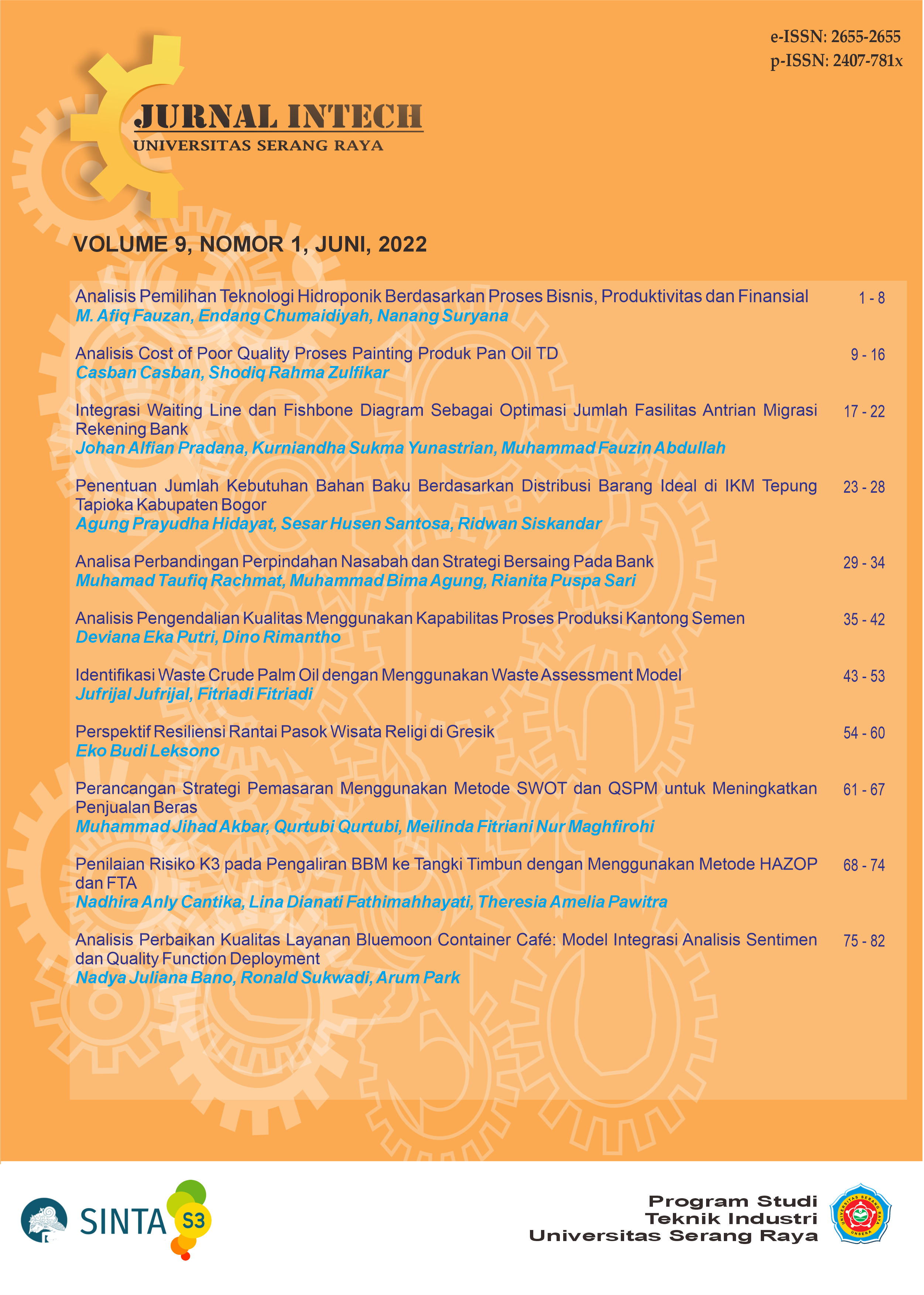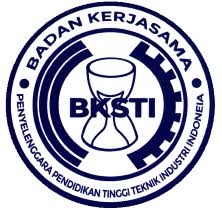Perspektif Resiliensi Rantai Pasok Wisata Religi di Gresik
DOI:
https://doi.org/10.30656/intech.v8i1.4620Keywords:
Gresik, Rantai Pasok, Strategi Resiliensi, Wisata ReligiAbstract
Kabupaten Gresik dikenal sebagai Kota industri sekaligus Kota santri. Sebutan Kota santri disebabkan banyak berdiri pondok pesantren dan terdapat 2 (dua) makam Walisongo, yaitu para ulama yang dahulu menyebarkan agama Islam di Pulau Jawa, yaitu Syekh Maulana Malik Ibrahim dan Sunan Giri. Disamping kedua makam wali, terdapat juga beberapa makam tokoh Islam yang saat ini banyak diziarahi oleh wisatawan lokal, nasional bahkan internasional. Aktivitas ziarah ini diistilahkan wisata religi. Pada saat pendemi Covid-19, jumlah wisatawan religi menurun, Hal ini berdampak negatif bagi banyak pihak, seperti pemerintah daerah, pengelola makam, pedagang makanan minuman dan cenderamata, penyedia transportasi lokal dan akomodasi. Para pihak ini merupakan aktor rantai pasok dari wisata religi. Artikel ini bertujuan untuk menganalisis ketahanan rantai pasok wisata religi di Gresik sehingga para aktornya dapat mengantisipasi dan lebih tahan terhadap gangguan yang terjadi pasca pandemi. Metode yang dipakai dalam artikel ini adalah observasi langsung yang diperkuat dengan kajian literatur guna mengidentifikasi strategi resiliensi berdasarkan indikator kinerja dari 3 (tiga) fase resiliensi: antisipasi dengan indikator visibility, resistensi dengan indikator flexibility, redundancy, collaborative, robustness dan agility serta respon dan pemulihan dengan indikator information sharing. Jika strategi resiliensi diterapkan maka semua aktor sudah siap dan tangguh untuk menghadapinya sesuai fase-fase resiliensi yang meliputi antisipasi, resistensi, serta respon dan pemulihannya.
Downloads
References
Christopher, M., & Peck, H. (2004). Building the Resilient Supply Chain. The International Journal of Logistics Management, 15(2), 1–14. https://doi.org/10.1108/09574090410700275
Craighead, C. W., Blackhurst, J., Rungtusanatham, M. J., & Handfield, R. B. (2007). The Severity of Supply Chain Disruptions: Design Characteristics and Mitigation Capabilities. Decision Sciences, 38(1), 131–156. https://doi.org/10.1111/j.1540-5915.2007.00151.x
Dinas Pariwisata Gresik. (2021). Rekapitulasi Kunjungan Wisata. https://dakuwison.gresikkab.go.id/dashboard
Hohenstein, N.-O., Feisel, E., Hartmann, E., & Giunipero, L. (2015). Research on the phenomenon of supply chain resilience. International Journal of Physical Distribution & Logistics Management, 45(1/2), 90–117. https://doi.org/10.1108/IJPDLM-05-2013-0128
Klibi, W., Martel, A., & Guitouni, A. (2010). The design of robust value-creating supply chain networks: A critical review. European Journal of Operational Research, 203(2), 283–293. https://doi.org/10.1016/j.ejor.2009.06.011
Ladki, S. M., & Mazeh, R. A. (2017). Comparative pricing analysis of Mecca’s religious tourism. International Journal of Religious Tourism and Pilgrimage, 5(1), 20–28. https://www.cabdirect.org/cabdirect/abstract/20173139682
Mittal, R., & Sinha, P. (2021). Framework for a resilient religious tourism supply chain for mitigating post-pandemic risk. International Hospitality Review, 1–18. https://doi.org/10.1108/IHR-09-2020-0053
Nishat Faisal, M., Banwet, D. K., & Shankar, R. (2006). Supply chain risk mitigation: modeling the enablers. Business Process Management Journal, 12(4), 535–552. https://doi.org/10.1108/14637150610678113
Pande, R. K. (2010). Flash flood disasters in Uttarakhand. Disaster Prevention and Management: An International Journal, 19(5), 565–570. https://doi.org/10.1108/09653561011091896
Parkash, S. (2011). Historical records of socio-economically significant landslides in India. Journal of South Asia Disaster Studies, 4(2), 177–204. https://www.researchgate.net/publication/272905239
Ponomarov, S. Y., & Holcomb, M. C. (2009). Understanding the concept of supply chain resilience. The International Journal of Logistics Management, 20(1), 124–143. https://doi.org/10.1108/09574090910954873
Sheffi, Y., & Rice, J. B. (2005). A supply chain view of the resilient enterprise. MIT Sloan Management Review, 47(1), 41–48. https://go.gale.com/ps/i.do?p=AONE&u=anon~c77e3b97&id=GALE%7CA139260573&v=2.1&it=r&sid=googleScholar&asid=ee56600c
Shinde, K. (2012). Policy, planning, and management for religious tourism in Indian pilgrimage sites. Journal of Policy Research in Tourism, Leisure and Events, 4(3), 277–301. https://doi.org/10.1080/19407963.2012.726107
Singh, C. S., Soni, G., & Badhotiya, G. K. (2019). Performance indicators for supply chain resilience: review and conceptual framework. Journal of Industrial Engineering International, 15(1), 105–117. https://doi.org/10.1007/s40092-019-00322-2
Tukamuhabwa, B. R., Stevenson, M., Busby, J., & Zorzini, M. (2015). Supply chain resilience: definition, review and theoretical foundations for further study. International Journal of Production Research, 53(18), 5592–5623. https://doi.org/10.1080/00207543.2015.1037934









.png)
.png)
.png)



.png)

.png)
